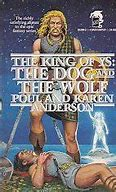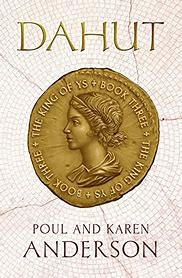If Poul Anderson had written his sequel to The Broken Sword, then one of the issues that it would have addressed was going to be the end of Faerie. This issue at least did get to be addressed in his The Merman's Children. John Keats wrote a similar passage in Lamia about science measuring the mystery out of the rainbow etc and Neil Gaiman has the mysterious places retreating before cartography. I disagree (another English poet wrote, "The angels keep their ancient places...") but let us first consider Anderson's account.
On page 148 of The Merman's Children (London, 1981), the magical is associated with the natural which is contrasted with both the supernatural and the artificial. Christianity exorcises magic; technology excludes it.
On the side of nature are:
time ordered by sun, moon or stars;
knighthood, a social convention, not a natural phenomenon, but one that had ever linked warriors to that mysterious "Otherworld" as against this measurable empirical world;
Against this are:
time ordered by clocks - hard, artificial, "...devoid of mystery";
bombard, rocket, sapper, "...the doom of knighthood";
ax, plow, cities, artificial environments;
ships in yearly greater numbers guided by compass and astrolabe;
such ships rounding the earth so that Christian steeples rise above the last Faerie refuges;
learned men measuring the tracks of the stars more closely than the ancients, calculating the architecture of the universe;
spectacles, telescopes and microscopes;
men questioning God's ways and questioning Faerie out of the world.
There are three stages in this advance against magic:
Christianity (church bells and steeples);
Deism (Masonry, "...architecture of the universe...");
atheism (questioning God's ways).
It is a false dichotomy. Beauty, wonder, mystery and awe are with us still and expressed by writers of fantasy. The beauty of a rainbow is neither diminished nor devalued but enhanced by scientific explanation.
Someone said, in the light of modern science, that "clocks are clouds", i.e., that what looks mechanical is ultimately chaotic.








































